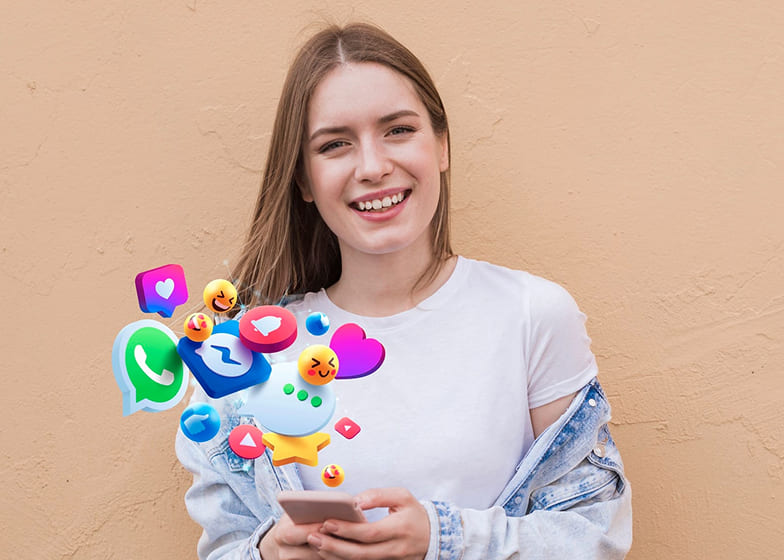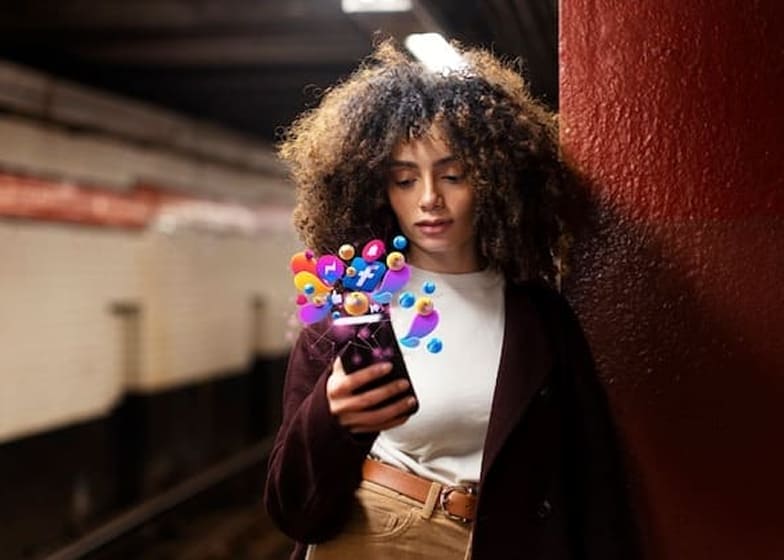Hashtags are a powerful tool for increasing visibility and reaching a wider audience on social media platforms. When used strategically, they help categorize content, making it discoverable to users who are interested in specific topics or trends. By including relevant hashtags in your posts, you can extend your reach beyond your existing followers, attract new users, and increase engagement. However, the key is to use them thoughtfully rather than overloading posts with irrelevant or overly popular tags.
Effective hashtag use begins with researching your niche and target audience. Look for hashtags that your audience frequently searches for or follows, including a mix of broad, trending tags and more specific, niche ones. Broad hashtags increase reach but come with high competition, while niche hashtags target a smaller, more engaged audience. Combining both types ensures your content is both discoverable and relevant.
Consistency and variation are also important. Using a set of branded hashtags alongside trending or campaign-specific ones helps build brand identity while keeping your content fresh. Engaging with hashtags by liking, commenting, or sharing posts within these categories also increases visibility and positions you as an active member of the community.
Lastly, monitor performance and adjust your strategy based on insights. Track which hashtags bring the most engagement and reach, and refine your approach over time. By using hashtags effectively, brands can grow their audience, improve engagement, and create a stronger presence across social media platforms.
Hashtags
A hashtag is a word or phrase preceded by the “#” symbol (e.g., #DigitalMarketing, #TravelTips) used on social media platforms to categorize content and make it easily discoverable. Hashtags turn keywords into clickable links, allowing users to search for or follow specific topics. When someone clicks on a hashtag, they are shown a feed of posts that include the same tag, which helps content reach people who don’t already follow you.
Hashtags serve multiple purposes: they increase visibility, connect content to trends, and help build communities around shared interests. For example, a fitness influencer using #HomeWorkout can reach people specifically searching for workout tips, while brands can create unique branded hashtags for campaigns to encourage user-generated content.
Essentially, hashtags act like labels or signposts that organize content on social media, making it easier for users to find posts relevant to their interests and for creators to expand their audience.
Hashtag Types
Branded Hashtags
Branded hashtags are unique to your business, campaign, or product line. They are used to promote brand identity and encourage followers to participate in campaigns or share user-generated content. For example, Nike uses #JustDoIt to create a strong association with its brand and to encourage athletes and fans to share their achievements using the hashtag.
Benefits:Branded hashtags increase brand awareness, foster community engagement, and make it easy to track user-generated content. They help followers feel like part of your brand story and create a sense of belonging.
Usage Tips:Keep branded hashtags short, memorable, and easy to spell. Promote them consistently across posts, campaigns, packaging, and offline marketing. Encourage followers to include the hashtag in their posts for contests, testimonials, or reviews.
Community Hashtags
Community hashtags connect your content to a group of like-minded users with shared interests. They are less about your brand and more about joining an existing conversation. For example, #BookLovers or #FitnessMotivation brings together users who are passionate about reading or fitness.
Benefits:These hashtags expand your reach beyond your followers by making your posts visible to people in the community. They allow engagement with users who are genuinely interested in your niche, improving the likelihood of meaningful interactions.
Usage Tips:Research active communities in your niche. Use a mix of large community hashtags and smaller, highly engaged ones to maximize visibility while targeting an audience likely to interact. Participate actively in conversations by commenting or liking posts within the hashtag.
Trending Hashtags
Trending hashtags are those currently gaining popularity or going viral. They often relate to events, news, or cultural phenomena. For example, #Oscars2025 or #WorldEnvironmentDay can generate high engagement when content aligns with the trend.
Benefits:Trending hashtags offer the opportunity to increase visibility exponentially, reach new audiences, and stay culturally relevant. They can make your content discoverable to users who aren’t following your account yet.
Usage Tips:Only use trending hashtags if your content is relevant to the topic. Avoid stuffing posts with irrelevant trending hashtags as this can seem spammy and harm credibility. Keep monitoring trends daily to spot opportunities quickly.
Niche Hashtags
Niche hashtags are very specific to a small segment of your audience. For example, #VeganDessertRecipes targets people interested in vegan desserts, while #MinimalistHomeDecor appeals to minimalism enthusiasts.
Benefits:These hashtags attract a highly engaged and targeted audience, increasing the likelihood of meaningful interactions. They also face lower competition than broad hashtags, meaning your posts are more likely to appear in top results.
Usage Tips:Use a combination of niche and broad hashtags. Research relevant keywords in your niche and experiment with different variations. Track engagement to identify which niche hashtags bring the most interaction.
Location-Based Hashtags
Location-based hashtags include city names, neighborhoods, or regions, helping local users discover your content. For example, #NYCFoodies or #LondonEvents targets users in New York or London.
Benefits:These hashtags are excellent for local businesses, events, or travel-related content. They help attract local customers or attendees, increase foot traffic, and build a regional following.
Usage Tips:Always pair location-based hashtags with relevant content. Combine them with niche and branded hashtags to maximize local visibility. Monitor local trends to see which hashtags are currently popular in your area.
Event or Holiday Hashtags
These hashtags are tied to specific events, holidays, or seasons. For example, #Christmas2025, #BlackFridayDeals, or #WorldBookDay.
Benefits:Event hashtags help your content become part of seasonal or trending conversations. They also make it easier for audiences searching for event-specific content to find your posts. Brands can use them to run themed campaigns, contests, or promotions.
Usage Tips:Plan your event-related content in advance and research hashtags associated with the holiday or event. Use a mix of widely used and less crowded hashtags to maximize discoverability. Combine with branded hashtags to strengthen brand identity during the event.
Content-Specific Hashtags
Content-specific hashtags categorize your posts based on the type of content you’re sharing. For example, #TutorialTuesday, #RecipeOfTheDay, or #ThrowbackThursday indicate the kind of post followers can expect.
Benefits:These hashtags help users find content relevant to their interests and encourage repeat engagement. They also allow you to participate in popular social media traditions and trends, making your content more relatable.
Usage Tips:Use content-specific hashtags consistently to build anticipation and habit among followers. Research popular content series in your niche and align your posts with them. Combine these hashtags with niche and branded hashtags for maximum effect.
Analyze Hashtag Performance
Track Engagement Metrics
Start by monitoring likes, comments, shares, saves, and clicks associated with each hashtag. Most social media platforms, like Instagram and Facebook, provide insights that show how many impressions a post received from hashtags specifically. High engagement from certain hashtags indicates that they resonate with your audience and are discoverable by new users.
Measure Reach and Impressions
Reach refers to the number of unique users who see your content, while impressions measure total views. Hashtags that generate higher reach allow your content to appear in more users’ feeds, including people who don’t follow you. Tracking which hashtags drive the most reach helps prioritize the tags that expand your audience effectively.
Evaluate Follower Growth
Effective hashtags can attract new followers interested in your niche. Monitor how your follower count changes after posting with specific hashtags. If certain tags consistently bring new followers, they should become a regular part of your hashtag strategy.
Monitor Hashtag Popularity and Competition
Some hashtags are highly popular and competitive, meaning your content may get lost quickly. Others are niche and less crowded, which can improve visibility within a targeted audience. Analyzing both popularity and competition helps you balance between reaching a large audience and attracting engaged, relevant users.
Experiment and Refine
Regularly testing different combinations of hashtags and analyzing performance is key. Track which hashtags drive the best engagement, reach, and follower growth over time, and adjust your strategy accordingly. Avoid using the same set of hashtags repeatedly without reviewing results, as audiences and trends evolve.
Optimize Hashtags for Different Platforms
Instagram is highly hashtag-driven, and posts with the right combination of hashtags can significantly increase discoverability. You can use up to 30 hashtags per post, but research shows that 10–15 relevant hashtags often work best for engagement. Use a mix of:
- Branded hashtags to build brand identity
- Niche hashtags to target specific audiences
- Trending hashtags to tap into popular topics
Twitter/X
Hashtags on Twitter help categorize content and increase visibility in trending topics. Limit hashtags to 1–2 per tweet for best engagement, as too many can appear spammy and reduce clarity. Focus on:
- Trending hashtags for timely topics
- Niche hashtags to reach targeted audiences
Facebook users engage less with hashtags compared to Instagram or Twitter. Use 2–3 hashtags per post to improve discoverability without overwhelming the caption. Focus on:
- Branded hashtags for campaigns
- Event or seasonal hashtags to join relevant conversations
LinkedIn is a professional network, so hashtags should be industry-specific and relevant. Limit to 3–5 hashtags per post, focusing on:
- Industry hashtags to reach professionals in your niche
- Branded hashtags for campaigns or thought leadership
TikTok
TikTok relies heavily on hashtags for content discovery via the For You Page (FYP). Use 3–5 hashtags per video, combining:
- Trending hashtags to capitalize on viral trends
- Niche hashtags to reach targeted audiences
- Branded hashtags for campaigns or challenges
Pinterest uses hashtags for search and categorization. Use 2–5 hashtags per pin, including:
- Keyword-focused hashtags to improve search visibility
- Seasonal or trend-based hashtags to capture timely interest
Summary
Using hashtags effectively is a key strategy for growing your social media audience because they increase content visibility, reach new users, and connect posts to relevant communities. By combining branded, niche, trending, and content-specific hashtags, you can attract both broad and targeted audiences while encouraging engagement and user-generated content. Monitoring hashtag performance, optimizing them for each platform, and consistently experimenting with new tags ensures your strategy remains effective. When used thoughtfully, hashtags help expand your reach, build brand awareness, and foster a loyal and engaged online community.













